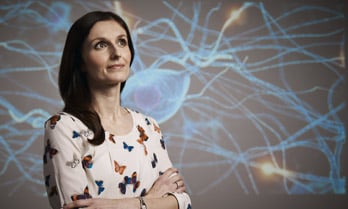







01 December 2022
The (cellular) balance of life and death
Every 10 seconds, about 10 million cells within our bodies will die, yet here we are, still standing. Cell death is a normal part of our body’s regulation needed to remove old, damaged or infected cells within the body.
Although the process of cell death is essential to keep us healthy, it requires a fine balance. Too much cell death can lead to neurological disorders like Alzheimer’s disease where the cells in the brain degrade. In contrast, too little cell death may lead to the rapid expansion of cancer cells. Importantly, once our cells die, they also need to be quickly removed.
Dying cells are removed by a specialized cell-type call phagocytes – essentially, the garbage truck cells of the body. Once they have been instructed to die, our cells use an array of molecular messages to help their removal. This includes releasing ‘find me’ signals to tell the phagocyte where they are, and ‘eat me’ signals that tell the phagocyte which cell to eat or, ‘engulf’.
This process of dying cell engulfment is vital as the accumulation of dying cells is a well-known trigger of inflammation and inflammatory disease.
Inflammation is like the body’s way of ringing the alarm bells however, just like cell death, it also requires a fine balance. Too little inflammatory signals may be insufficient to bring in enough reinforcements to help fight the danger. In contrast, too much inflammation can overwhelm the body and be extremely harmful. Therefore, heightened levels of inflammation are often a hallmark of devastating diseases like viral or bacterial infections and autoimmunity.
“Cells don’t simply just give up and die, but they go out in fashion, with over 12 different ways that our individual cells can die! My research looks at how immune cells can remove dying cells, and the importance of this in preventing harmful inflammation and disease,” said Dr. Atkin Smith
Dr Georgia Atkin Smith will investigate how dying cells are removed to prevent harmful inflammation. She aims to discover new molecular factors that aid the recognition and removal of dying cells, and assess how the messages released by dying cells and phagocytes work together to maintain the perfect balance of inflammatory signaling.
Georgia’s research will help us better understand how inflammation is caused, and importantly, how it is resolved. Altogether, this project will generate a foundation of new knowledge we need to maintain the correct balance of inflammation during disease.